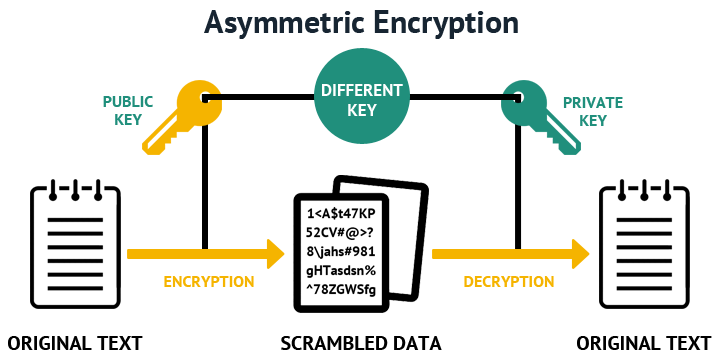How Asymetric Public Private Key Pairs Are Generated
15.12.2020 admin
Cryptography
Derrick Rountree, in Security for Microsoft Windows System Administrators, 2011
Asymmetric Encryption

A random public/private key pair is generated when a new instance of the class is created. RSACryptoServiceProvider RSA = new RSACryptoServiceProvider; Once keys are generated, we can use ToXmlString or ExportParameters method to read the keys. Jul 08, 2014 Public key cryptography is a kind of asymmetric cryptography. Asymmetric cryptography using key pairs for each of the users needs ' n ' number of key for n users.
Asymmetric encryption is also referred to as public key encryption. In asymmetric encryption, both the encrypting and decrypting systems have a set of keys. One is called the public key, and another is called the private key. If the message is encrypted with one key in the pair, the message can be decrypted only with the other key in the pair.
Asymmetric key algorithms are not quite as fast as symmetric key algorithms. This is partially due to the fact that asymmetric key algorithms are generally more complex, using a more sophisticated set of functions.
Asymmetric Key Algorithms
Asymmetric key algorithms aren't as widely used as their symmetric counterparts. So we'll just go over two of the big ones: Diffie-Hellman and RSA. Generate api key php laravel.
Diffie-Hellman: The Diffie-Hellman algorithm was one of the earliest known asymmetric key implementations. The Diffie-Hellman algorithm is mostly used for key exchange. Although symmetric key algorithms are fast and secure, key exchange is always a problem. You have to figure out a way to get the private key to all systems. The Diffie-Hellman algorithm helps with this. The Diffie-Hellman algorithm will be used to establish a secure communication channel. This channel is used by the systems to exchange a private key. This private key is then used to do symmetric encryption between the two systems.
RSA: It is the Rivest Shamir Adelman algorithm. RSA was developed in 1978. RSA was the first widely used asymmetric algorithms used for signing and encryption. It supports key lengths of 768 and 1,024 bits. The RSA algorithm uses a three-part process. The first part is key generation. The keys used in the RSA algorithm are generated using mathematical operations based on prime numbers. The second part of the process is encryption. This encryption is done using one of the keys in the key pair. The third part of the process is decryption. The decryption is done using the other key in the key pair.
Read full chapterHow Asymmetric Public Private Key Pairs Are Generated In The World
How Asymmetric Public Private Key Pairs Are Generated 2017
URL: https://www.sciencedirect.com/science/article/pii/B9781597495943000028